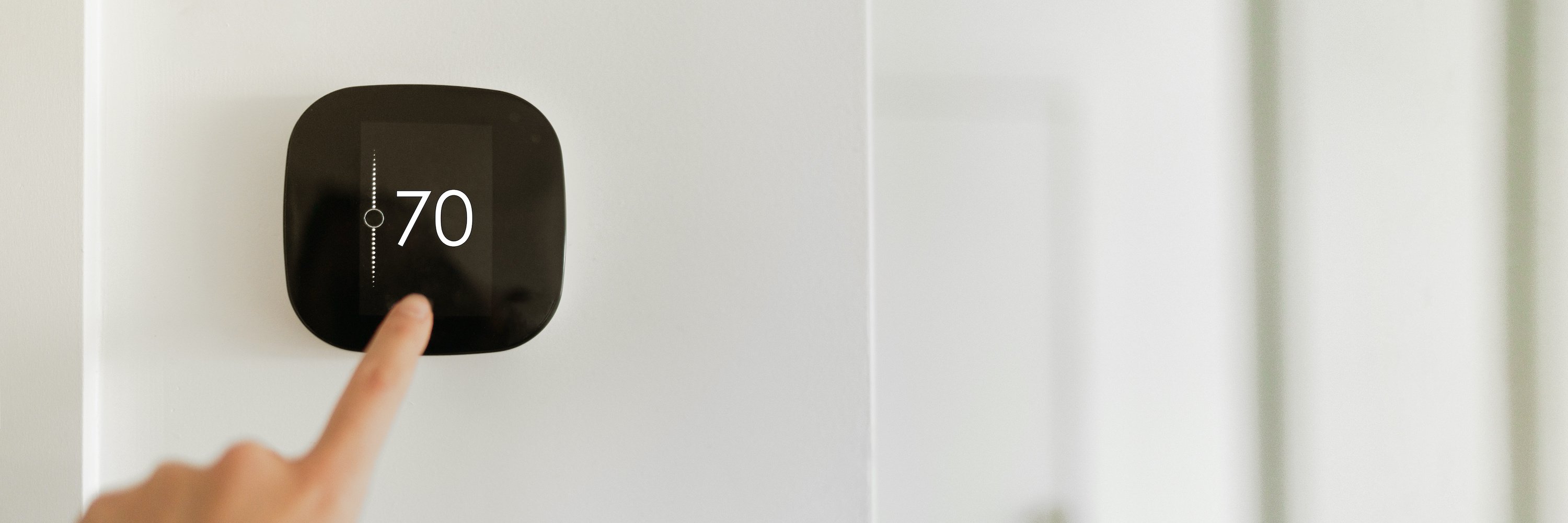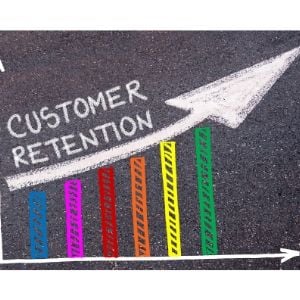Foreword
Over the past two years, JB Warranties has commissioned Decision Analyst to research topics that impact the success of the HVAC industry. Through these studies, we’ve learned
- the true cost of acquiring a residential HVAC customers
- the demographics, characteristics, and buying behaviors of those customers who buy maintenance agreements and extended warranties
We’ve taken the key learnings from these two studies, along with additional secondary research, and developed this guide to help our HVAC customers with generating more residential sales.
Introduction
 Your loyal neighborhood customers are key players in your HVAC/R business. Not only can your team rely on a steady stream of income from serving or replacing their existing equipment, but recurring customers also act as fantastic word of mouth recommendations for your company. Though, when it comes time to expand your residential sales, you might need to look beyond your current roster of regular callers.
Your loyal neighborhood customers are key players in your HVAC/R business. Not only can your team rely on a steady stream of income from serving or replacing their existing equipment, but recurring customers also act as fantastic word of mouth recommendations for your company. Though, when it comes time to expand your residential sales, you might need to look beyond your current roster of regular callers.
Branching out to attract new residential HVAC customers does come with its challenges. On the one hand, the size of the potential “new customer” pool is rapidly expanding each year. On the other hand, an uptick in competition in the industry and specialized technology has quickly unleveled the playing field for many small HVAC/R businesses. Between ever-evolving trends in the marketplace to shifting consumer behaviors, you must put forth a winning strategy before even attempting to secure your first new customer.
Three significant elements will construct your winning strategy:
- An understanding of the residential HVAC marketplace
- A marketing budget you can afford
- A collection of proven sales techniques
For everything you need to know about generating HVAC/R residential sales without breaking your budget, let’s get started.
What’s Happening in the Residential HVAC Marketplace?
The residential HVAC marketplace is booming. There were nearly 79 million owner-occupied households in the United States at the start of 2019, an increase of more than 2 million from the previous year. Of these 79 million homes, approximately 13.6 million will require services and equipment from HVAC contractors in a given year, though 5.3 million have existing contractor relationships.
The amount of HVAC services required by the current residential marketplace equals approximately $21 billion of the total U.S. market. In other words, there’s money to be made for all HVAC contractors and their technicians — when you know how to optimize your services. Knowledge of industry trends, how to combat shared challenges, and how to utilize consumer behaviors in your favor will make or break your success in the residential HVAC marketplace.
Influential Industry Trends
Each year, industry insiders spend months tracking down the latest trends to rock the residential landscape. This year, an overwhelming desire to become more eco-friendly has heavily influenced consumer spending habits. Plus, access to cutting-edge technology—and the desire to be covered should their technology fail them—has skyrocketed the amount of HVAC/R warranties and service agreements sold to customers.
1. Environmentally-Friendly Solutions to Heating and Cooling
As the interest in renewable energy resources continues to sweep the nation, clean energy has made its way into the HVAC/R industry in a big way. A surge of customers has expressed their concerns about the environmental impact of the services and companies they support, including their heating and cooling services.
Geothermal heat pumps have quickly become an environmentally-friendly solution for both heating and cooling in residential homes. According to the Department of Energy, approximately 50,000 geothermal heat pumps are installed across the nation annually. While these pumps currently account for just 1 percent of the American HVAC/R market, recent tax credits reinstated by Congress may indicate that sales are slated to peak in the near future. Not to mention, homeowners prefer the multitude of options that accompany geothermal heat pumps, especially since they don’t require existing solar panels to operate.

2. Smart Technology Throughout the Home
Hey Siri, have you seen the latest statistics for smart technology in the U.S? More than 14 million homes across America are hooked up to “smart home” devices, from refrigerators to thermostats. With the rise of WiFi-enabled products in the kitchen, living room, and even at your doorbell, chances are the amount of “smart houses” won’t be declining any time soon.
For HVAC/R contractors and plumbers, this glaring trend is shooting one message: OMG get on the smart technology train, ASAP. Contractors should prepare to offer WiFi-enabled products, learn to properly install them in client’s homes and offices, and demonstrate their value to new sales. Self-regulation sensors, remote thermostat control, and the ability to set different temperatures in varying areas of the homes are all services residential homeowners will come to expect from their HVAC/R provider.
3. HVAC Service Agreements & Warranties
The percentage of homeowners purchasing a maintenance agreement with their new HVAC system has increased to more than 50 percent over the past decade. For contractors and technicians, these HVAC service agreements and warranties provide an entryway into future replacements and services. After all, when a problem arises, 59 percent of homeowners are more likely to contact the contractor they have a maintenance agreement with first.
Likewise, maintenance or service agreements can help build customer loyalty through increased “touchpoint” opportunities. In other words, your customers ultimately prefer feeling high priority. By providing a warranty or maintenance agreement, your company offers a secondary method of guaranteeing your service, often at a decreased wait time and at a lessened service cost.
Who Says You Can't Take It with You?
Just fill out this form to get a copy of this content in a PDF eBook format.
Common Shared Challenges Contractors Face
Now more than ever, the employment numbers for the HVAC/R industry have hit an all-time high. Employment spiked more than 5 percent from 2017 to 2018, resulting in more than 1.2 million Americans employed by HVAC companies. Moreover, the U.S. Bureau of Labor Statistics predicts an additional 13 percent growth in the industry through 2028. This rate of expansion is significantly faster than the average rate for other occupations, let alone specialized trades like heating or cooling.
What does this mean for your HVAC/R business? On the one hand, the total revenue of the services and equipment sold annually by HVAC contractors in the U.S. has reached more than $71 billion — a near $3 billion increase from the previous year. On the other hand, an influx of competition in the industry makes it more difficult for individual companies to secure new sales. The all-time-high rate of employment and overall revenue benefits the industry as a whole, but it does create a shared challenge between contractors to compete for new customers.
Consumers Buying Behaviors and Attitudes
Homeowners are quick to call when encountering issues with their HVAC/R systems, though statistics show that residential customers are more comfortable contacting contractors they’ve already established a relationship with. In fact, 59 percent of recent homeowners who purchased a new HVAC system for their home in the previous two years said the first step in selecting a contractor to install a replacement unit was to “call the contractor with whom I have a service or maintenance contract with.” Moreover, 51 percent of recent homeowners who purchased a new HVAC system for their home in the previous two years were sure to buy a maintenance agreement from their contractor for their new unit.
 Customers have been more inclined to purchase warranties and maintenance agreements at a much higher rate than previous years. The percentage of homeowners buying a maintenance agreement with their new HVAC system has increased to more than 50 percent over the past decade. Of the 45 percent of recent HVAC purchasers who were offered an extended warranty for their new system, 25 percent opted to purchase one. While our research suggests males purchase maintenance agreements at a higher rate than females, overall, it appears those in the South buy the highest rate of warranties, likely due to their frequently high temperatures.
Customers have been more inclined to purchase warranties and maintenance agreements at a much higher rate than previous years. The percentage of homeowners buying a maintenance agreement with their new HVAC system has increased to more than 50 percent over the past decade. Of the 45 percent of recent HVAC purchasers who were offered an extended warranty for their new system, 25 percent opted to purchase one. While our research suggests males purchase maintenance agreements at a higher rate than females, overall, it appears those in the South buy the highest rate of warranties, likely due to their frequently high temperatures.
Though 80 percent of homeowners who purchased a maintenance agreement said it was acquired as part of the total price of their system, studies indicate these customers are willing to upgrade from lower-priced offers and spend roughly $1,000 more on their new system than homeowners who rejected a maintenance agreement. Those who purchased a maintenance agreement are also more likely to accept a higher overall bid, replace their unit sooner, and buy ancillary items like a thermostat. These customers are generally more willing to increase their spending on indoor air quality issues as well, so it’s recommended you leverage your maintenance agreement to improve your overall bottom line.
Yet, routine maintenance isn’t the only budget that experienced a hike in 2020. Preference for their budget when it comes to new installs and repairs has increased in tandem with homeowners’ desire to install HVAC systems with less of an environmental impact. In fact, an uptick of consumers claim they’re prepared to pay more for eco-friendly products, including 61 percent of Millenials (adults between the ages of 22 and 38 years) and 46 percent of Baby Boomers (adults between the ages of 56 and 76 years). With consumer behavior leaning towards spending more on services they feel are environmentally-conscious, it’s time to get on board with going green. If your HVAC company isn’t prepared to offer more efficient, environmentally-friendly products and services, you’re not just missing out on going green — you’re missing out on making green.
But before we dive too deep into the benefits of maintenance agreements or enticing clients with eco-friendly options, it’s time to talk about how to reel in new residential HVAC sales using their preferences as your bait. The first step: learning how to create an effective marketing strategy for your HVAC/R business.
How to Start Building Your Marketing Strategy
A marketing strategy is your game plan for connecting with prospective new sales and turning them into lifetime customers of your HVAC/R business. While the thought of new customers might automatically bring visions of dollar signs to mind, there are quite a few metrics to consider that impact your bottom line. Two metrics in particular help you understand how your business is performing and where you stand to gain (or lose) money: customer acquisition cost (CAC) and customer lifetime value (CLV).
Let’s dive into why each is important, how they’re related, and how each will factor into your marketing strategy.
 Determine Your Customer Acquisition Cost
Determine Your Customer Acquisition Cost
Your customer acquisition cost (CAC) is what it sounds like: how much money it costs to convert a prospect into an actual customer. Your CAC takes into account the cost of acquiring new sales across all marketing channels, from online ads to billboards, radio spots, and even store-front signs. Research suggests most prospects require several touchpoints with your brand—like ads and radio spots—to build interest, trust, and eventually convert, hence why all marketing channels are included in your overall acquisition cost.
To calculate your CAC, you must divide your overall marketing expenses by the number of net new customers acquired over a set period. Your marketing expenses will include:
- The salary you paid to your marketing and sales team, including freelancers
- The cost of overhead, such as rent or equipment spent on marketing and sales
- The amount spent on paid marketing, including Google Ad Words, social media ads, and content marketing
- The cost of tools, such as search engine optimization (SEO) software
Of course, your cost to acquire HVAC customers will vary, and there’s no set “industry standard.” However, in our research, we’ve found that the HVAC industry spends $2.78 billion a year to attract new customers. The current pool of potential new customers is 7.93 million. Therefore, if you divide the $2.78 billion that the HVAC industry spends to attract new customers each year by the pool of potential new customers, the average estimated CAC is $350 per new customer.
Find the ‘Value’ in Customer Lifetime Value
A specific profit is associated with each new customer you bring on board. In the world of HVAC/R, especially with a recent increase in HVAC warranties, each customer’s profit typically comprises more than one sale. Customer lifetime value (CLV) weighs the total amount of profit each net new customer will likely bring in. A general rule of thumb to find CLV is subtracting your CAC from the product of annual revenue per customer times customer relationship in years.
To calculate your CLV, first, multiply the annual revenue per customer by the customer relationship in years. We’ve found residential consumers will spend an average of $400 per service call. So, if annual revenue per customer is $400 and your customer relationship is five years old, your customer is netting $2,000 for the duration of the relationship.
Next, subtract your customer acquisition cost. If you spent $350 acquiring a new customer, their lifetime value based on $2,000 would be $1,650. Bear in mind, you must subtract your initial CAC from the relationship value, as doing so allows you to differentiate between your actual profit rather than just revenue.
Determine Your Marketing Budget Based on CAC and CLV
Generally speaking, the less money you spend acquiring a customer, the more profit you stand to make. However, you don’t want to spend pennies growing a client list of customers who will only pay you pennies in return. Instead, you’ll have to view your marketing budget as a long-term plan that will ultimately push your bottom line.
First, calculate how much of your net profit you’re able to delegate to marketing efforts. Remember, you’ll still need to pay your technicians, purchase equipment and supplies, and keep your business afloat, so never overspend marketing budget that you don’t have. Next, divide your marketing budget into the appropriate channels. Will you purchase Facebook ads or Google Ad Words? Have you been eying an open billboard in the area? Consider that all of these costs will ultimately drive up your CAC if you’re not allocating your funds appropriately.
Once you have an idea of how your marketing strategy will pan out across multiple channels, consider all of the previously mentioned trends. Perhaps part of your marketing strategy should be advertising maintenance agreements or extended warranties. Not only will these elements act as a marketing ploy to provide customers with a sense of security, but maintenance agreements allow you to secure further services with recurring customers to increase their CLV.
 Must-Have Tactics for a Successful Strategy
Must-Have Tactics for a Successful Strategy
While your metrics may make or break your profit return, a successful marketing strategy relies on tested techniques for reaching your target audience. Ideally, you’ll want to be funneling your marketing budget into an even mix of paid and organic media: paid meaning advertisements, and organic meaning blog posts, social media updates, and even a polished website. Luckily, not all of these tactics need to break the bank.
1. Optimize Your Website to Be More People Friendly
If you don’t already have a website, stop reading and get right on that. In today’s day and age, Google is the first place a prospect will go to scope out more information about your HVAC/R company. Without a website of your own, you lack a place to preach your accolades, list your services, and tell potential customers more about why they should choose you instead of the other 1.2 million Americans employed by HVAC companies.
Be sure to include a clear list of your services, the details of your maintenance agreements, and any unique products you may have. For example, with more homeowners seeking out environmentally-friendly initiatives, your website is the perfect place to advertise your “going green” solutions. Always include a contact form for prospects to leave any questions or schedule an appointment.
2. Boost Online Traffic with Social Media
No, your HVAC business doesn’t have to create a Pinterest or TikTik account. However, having a Facebook or Instagram page, or even a Twitter account, for your company creates a space to share testimonials, possible promotions, and new products. Not to mention, Facebook ads can help drive traffic to your website, or more specifically, to a contact form.
Simple posts, even as few as two per week, can make your business more relatable to your customers and give them a consistent space to find you on the Internet.
3. Invest in Online Advertising Campaigns & local SEO
Local SEO tactics plus Google Ad Words and Bing Ads are surefire ways to get your company in front of the people actively searching for your services. Now more than ever, prospects are turning to “HVAC near me” or “plumbers near me” searches to locate a convenient service provider. Investing in online ad campaigns and local SEO will drive brand awareness and grab the attention of new customers.
4. Maintain a Strong Source of Customer Service
Lastly, never neglect the power of genuine customer service. Word of mouth and online reviews are powerful mediums that can either boost your business or tank it. Where 46.7 percent of consumers will share a bad customer experience, 44 percent will also share a good experience online or in-person. Realistically, there are 50/50 odds that a customer’s level of satisfaction can result in a Google or Yelp review, or end up the talk of the town at the next neighborhood meeting.
Therefore, it’s paramount you stay on top of all the reviews left for you. Received a compliment? Thank your customer for their service. Did someone leave a not-so-nice review? Apologize and ask how you can rectify the situation. Diffusing negative reviews and adding to the positivity of a praising testimonial can speak more about the professionalism of your business than your services can.
Get Started with Generating New Sales
Now that you know which trends to capitalize on and how to form your own marketing plan, it’s time to start generating new sales. Remember that your profit is impacted by both the cost of finding new business and the loyalty and spending habits of your existing customers. So, you’ll need to be smart about who and how you target prospects and what promises you make to loyal customers.
Acquiring New Customers
Smart technology, geothermal water heaters, energy-efficient thermostats—you name it, and it’s more marketable now than ever before. While you’ll want to test the interest in environmentally conscious and technology-driven products in your area, chances are all of the above are highly marketable and in-demand. When it comes to new customer acquisition, your knowledge and preparedness to tackle 2020’s upcoming trends tell your prospects you’re serious about bringing modern HVAC/R into their home.
As you generate new residential HVAC sales, be sure to focus on profitable trends such as these smart products. Not only will this indicate your willingness to benefit the environment, but the higher costs associated with purchasing and installing these products can drive your bottom line and help offset customer acquisition costs.
 Improving Customer Retention
Improving Customer Retention
Once you’ve turned a prospect into a customer, your next goal is customer retention. Customer retention refers to the actions you take to maintain as many customers as possible, often through customer loyalty initiatives. For example, offer your local neighborhood HVAC clients a discounted price on air filter changes or host a small event to explain how smart technology options like energy-efficient thermostats would work in their home. These little bonuses are large steps towards building customer loyalty.
Likewise, customer retention is an excellent chance to upsell with maintenance agreements and warranties. These extra-cost items provide a segue into future services and ensure a homeowner will dial your number when an issue strikes their HVAC system.
Utilizing Cross-Sells and Upsells
Cross-sells and upsells can be applied at any point in the consumer journey to increase your profit and provide your customer with additional services. A cross-sell is when you sell an additional product or service to an existing customer. If you have multiple service offerings, such as HVAC/R and plumbing, or are licensed to install geothermal water heaters, both are applicable to cross-sell to existing clients.
An upsell is when you persuade an existing customer to upgrade to a more expensive or premium version of your product or service. In the HVAC industry, one of the best examples of an upsell is including maintenance agreements and extended warranties in your offer. On average, clients who opt-in for extended warranties or agreements were more likely to replace their HVAC unit sooner, accept a higher overall bid, and purchase additional items, like thermostats. Plus, in addition to spending more money now, a warranty ensures the client will also spend money with you later.
The best warranty solutions should include:
- No deductible
- Coverage for all brands of products
- No prior authorization required for repairs
- Reimbursable labor rates of up to $300 per hour
- A simple online dashboard for purchasing and easy claim filing
- Warranties that transfer to new homeowners at any time, free of charge
- Customizable literature for free that you can put your logo on
- Availability in all 50 states
Geared with solid warranty and maintenance agreement options, you can turn one-time clients into high-spending, lifelong customers.
Start Generating Your New Sales Today
Generating new sales comes with a plethora of challenges. However, the ever-expanding pool of potential customers and innovative trends exploding on the scene make this the best time to expand your HVAC/R services. By combining the proper metrics with a winning strategy, you can be generating new sales and pushing your bottom line in no time.


